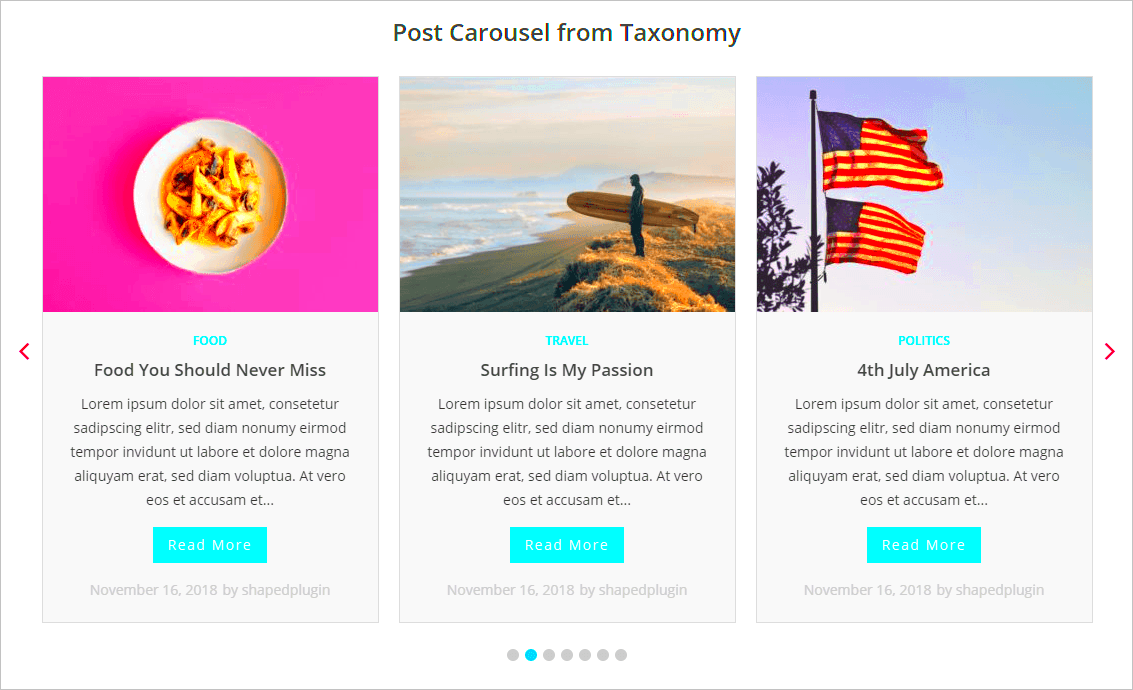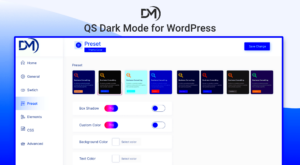If you’re looking to elevate the visual appeal of your WordPress site, you’ve probably come across the term “carousel plugins.” These nifty tools allow you to create engaging sliders and galleries that rotate or transition between images, videos, and content. Not only do they grab attention, but they also help present information in an organized way. In this post, we’ll dive into what carousel plugins are and why you might want to consider incorporating them into your site.
Benefits of Using Carousel Plugins in WordPress

So, why should you consider using carousel plugins on your WordPress site? Here are some compelling reasons:
- Enhanced Visual Appeal: A well-designed carousel can make your website more attractive and dynamic. It allows you to showcase multiple pieces of content without cluttering your page.
- Space-Saving: Carousels allow you to display numerous images or posts in a single spot, effectively utilizing space on your site. This is especially useful for portfolios and galleries.
- Improved User Engagement: Visitors are more likely to interact with engaging visuals. A carousel can keep users on your site longer, exploring different content without a lot of effort.
- Customization Options: Most carousel plugins come with a variety of customization options. You can adjust speeds, transitions, and styles to align with your branding and user experience.
- Responsive Design: Many carousel plugins are designed to be mobile-friendly, ensuring that your visuals look great on any device.
- SEO Benefits: By enhancing the visual content on your site, you may improve your SEO rankings. Engaging images and content can lead to longer visit durations, decreasing bounce rates.
In summary, carousel plugins offer a range of benefits that can significantly enhance the functionality and aesthetics of your WordPress site. Whether you’re a blogger, an entrepreneur, or a creative, incorporating a carousel plugin could be a game-changer for your online presence.
Features to Look for in a Carousel Plugin

When it comes to choosing a carousel plugin for your WordPress site, it’s essential to identify the features that align with your specific needs. A well-chosen plugin can significantly enhance your site’s aesthetics and usability. Here are some critical features to consider:
- User-Friendly Interface: The plugin should have a straightforward, intuitive interface that makes it easy to configure and manage your carousel settings without a steep learning curve.
- Responsive Design: With the increasing number of mobile users, selecting a plugin that offers a responsive design ensures that your carousel looks beautiful on all devices, from desktops to smartphones.
- Customization Options: Look for plugins that provide ample customization features such as fonts, colors, and transition effects, allowing you to align the carousel with your brand’s visual identity.
- Speed and Performance: A sluggish carousel can result in a poor user experience. Opt for a plugin known for its fast loading speeds and minimal impact on your site’s overall performance.
- SEO-Friendly: Choose a carousel that is designed with SEO best practices in mind, ensuring that your images are optimized and contribute to your overall search engine visibility.
- Multiple Media Support: A versatile plugin should allow you to integrate various types of media, including images, videos, and even interactive content.
- Shortcode Support: The best plugins include shortcodes that make it easy to add the carousel to any post or page without fussing with complicated coding.
By keeping these features in mind, you can better ensure that the carousel plugin you choose will enhance the visual appeal and functionality of your WordPress site.
Top WordPress Carousel Plugins in 2023
As we navigate through 2023, several carousel plugins have emerged as frontrunners in enhancing WordPress sites’ visuals. Here’s a rundown of some of the most popular and effective carousel plugins you should consider:
| Plugin Name | Key Features | Why Choose This Plugin? |
|---|---|---|
| MetaSlider |
|
Great for users looking for a straightforward interface alongside advanced customization. |
| Smart Slider 3 |
|
A robust choice if you’re into creating visually stunning sliders with ease. |
| Slider by Soliloquy |
|
Perfect for e-commerce sites needing captivating visual displays. |
| WP Slick Slider and Image Carousel |
|
Ideal for simple galleries and users prioritizing speed and ease of use. |
Each of these plugins stands out for its unique features and capabilities, allowing you to showcase your content in engaging and dynamic ways. Choose one that resonates with your specific goals, and watch your WordPress site come to life!
5. How to Install and Configure a Carousel Plugin
Installing and configuring a WordPress carousel plugin can seem daunting, but it’s really quite straightforward! Whether you’re a seasoned web developer or just starting out with your first website, you’ll find the process user-friendly. Here’s how to get started:
- Choose a Plugin: First things first, decide which carousel plugin suits your needs. Popular options include Smart Slider 3, MetaSlider, and Soliloquy. They each have unique functionalities, so take a moment to explore their features.
- Install the Plugin:
- Log in to your WordPress dashboard.
- Navigate to Plugins > Add New.
- In the search bar, type the name of the carousel plugin you’ve chosen.
- Click on the Install Now button, and once it’s installed, hit Activate.
- Configure Settings:
- After activation, go to the plugin’s settings page, usually found in the dashboard menu.
- Here, you can customize settings such as slide duration, animations, and layout.
- Make sure to check for any additional options, like image cropping or navigation arrow settings.
- Add the Carousel to Your Site: You can integrate the carousel into your posts or pages using a shortcode or block editor, depending on your plugin. Simply follow the documentation provided by the plugin for the exact details.
Before going live, preview the changes to ensure everything looks as you envisioned!
6. Best Practices for Using Carousels Effectively
Carousels can be a fantastic way to present content visually, but they can also be overused or misused. To make sure your carousel doesn’t fall flat, here are some best practices to consider:
- Keep it Simple: Avoid cluttering a carousel with too many slides. Aim for 3 to 5 slides to prevent overwhelming visitors. Less is often more!
- Focus on Quality Images: Always use high-resolution images that capture attention. A pixelated or blurry image can hurt your site’s credibility.
- Prioritize Accessibility:
- Include alt text for images to ensure accessibility for screen reader users.
- Make sure that navigation controls are clearly visible and easy to use.
- Utilize Captions Wisely: Use captions to add context to your images and highlight important information. However, don’t overcrowd slides with too much text.
- Auto-Advance with Caution: If you choose to enable auto-advance, provide enough time for users to absorb content before transitioning. A safe range is 5-7 seconds.
- Track Performance: Monitor how users interact with your carousel. Use analytics tools to see if visitors engage with the slides or if they bounce away instead.
Incorporating these best practices will help ensure that your carousel enhances the user experience rather than detracting from it. Happy carousel building!
Common Issues and Troubleshooting Tips
Using carousel plugins in WordPress can drastically enhance the visual aspect of your website. However, like any technology, they can sometimes run into hiccups. Here are some common issues you might face and, more importantly, some handy troubleshooting tips to get you back on track.
- Plugin Conflicts: It’s not uncommon for various plugins to clash with one another. If your carousel isn’t displaying correctly, try deactivating your other plugins one by one to find the culprit.
- JavaScript Errors: Many carousel plugins depend on JavaScript to function properly. Open your browser’s developer console (F12 in most browsers) and check for any errors that might indicate what’s going wrong.
- Responsive Issues: Sometimes, carousels may not look good on mobile devices. Ensure that your plugin has responsive settings enabled. You can also check the settings or custom CSS to make adjustments for smaller screens.
- Image Size and Quality: Low-quality or improperly sized images can affect load time and presentation. Ensure that images used in your carousel are optimized for web use; this boosts performance and appearance.
- Browser Compatibility: Not all carousels work seamlessly across different browsers. Test the functionality of your carousel in multiple browsers to make sure it operates effectively everywhere.
If you encounter any persistent issues that you can’t resolve, don’t hesitate to check the plugin’s support forums or consider reaching out to their customer service. They often have helpful documentation and a responsive team that can assist you further!
Conclusion: Enhancing Your Website with Carousel Plugins
In the world of web design, visuals matter—a lot! Carousel plugins offer an exciting way to showcase your content engagingly and dynamically. They can take a dull page and turn it into a vibrant space that captures your audience’s attention. Whether you’re displaying a portfolio, highlighting testimonials, or featuring products, a well-implemented carousel can enhance user experience and boost engagement.
By using the insights provided in our guide, you’ll be better equipped to choose the right carousel plugin that meets your needs. Remember:
- Choose Wisely: Not all carousels are created equal. Look for features like responsiveness, customization options, and user reviews.
- Test and Optimize: After installation, always test your carousel. Adjust settings based on performance and feedback to ensure optimal viewing experiences.
- Stay Updated: Regular updates and maintenance are crucial for plugins to work smoothly and securely. Keep an eye on plugin updates to avoid issues and access new features.
Investing time in enhancing your website with carousel plugins will pay off. Not only do they make your content more visually appealing, but they also encourage visitors to linger longer. So go ahead, try out different options, troubleshoot effectively, and watch your website transform into a visually stunning gem!



